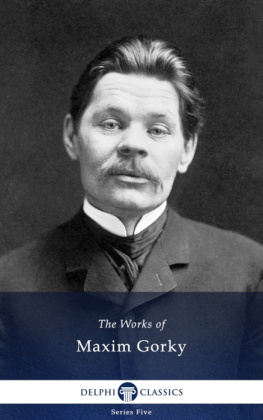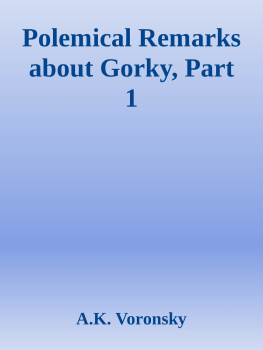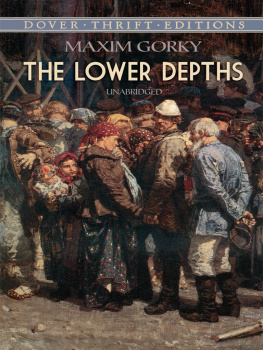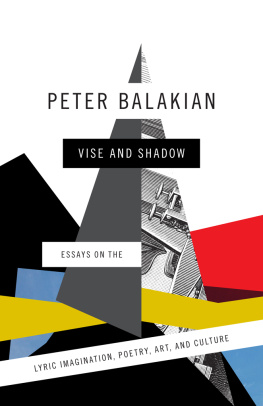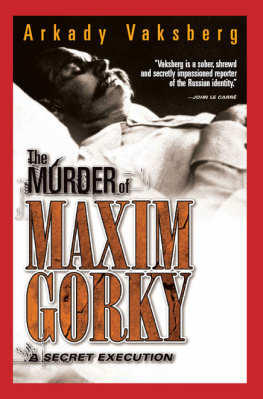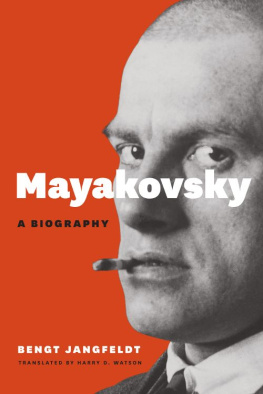First published in the United States in 2000 by
The Overlook Press, Peter Mayer Publishers, Inc.
141 Wooster Street
New York, NY 10012
www.overlookpress.com
for bulk and special sales orders, contact sales@overlookny.com
Copyright 2000 by Nouritza Matossian
All rights reserved. No part of this publication may be reproduced ortransmitted in any form or by any means, electronic or mechanical, including photocopy, recording, or any information storage and retrieval system now known or to be invented, without permission in writing from the publisher, except by a reviewer who wishes to quote brief passages in connection with a review written for inclusion in a magazine, newspaper, or broadcast.
ISBN 978-1-46830-517-3
BLACK ANGEL
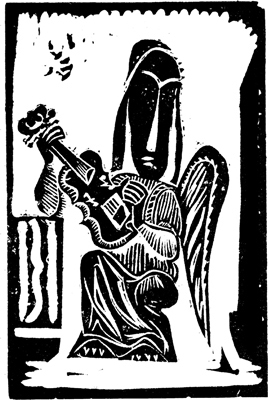
The Angelic Violin, Greetings Card, 1940. Linoleum cut on paper, 64. (Diocese of the Armenian Church of America)
By the same author
Xenakis
For Hagop, Vahakn and Rolf
Thanks to Agnes Gorky Fielding for kind permission to reproduce works and text by Arshile Gorky.
And gratitude to Archbishop Khajag Barsamian, the Diocese of the Armenian Church of America, for permission to quote from the translations and publications by Karlen Mooradian and to reproduce works of the Mooradian Estate.
Special thanks are due by the author and publishers to the Vatche and Tamar Manoukian Charitable Foundation for their generous sponsorship of the illustrations.
The author and publishers are also especially grateful to the Armenian General Benevolent Union and Louise Manoogian Simone for their financial assistance.

Black & white plates:
| Section 1 | between |
| Section 2 | between |
Maps:
Part titles:
A Writers Journey
The name Arshile Gorky meant nothing to me as a teenage student from overseas. In the Tate Gallery, London, I was transfixed by the staring eyes of a woman. She sat square and solid, like my Armenian grandmother in an old photograph. A boy carrying flowers hovered beside her. His dark eyes were like my young brothers. There were other small canvases. Curving, vibrant shapes nestled like ripe fruit in sculpted hollows. Next door, huge abstracts hung with drifts of jewel colours in mysterious, shifting forms. Some of the patterns recalled the Armenian alphabet Id learned as a child.
Turning to the catalogue I read,
Arshile Gorky (Vosdanig Manoug Adoian), born October 25, 1904, in Van, Armenia Mother from long line of Apostolic priests Armenians driven out by Turks. Gorky with his mother and sister and thousands of refugees walk many dying of cholera
Gorky was Armenian. He had shared the fate of my family, had survived the major genocide of 19151920 when the Ottoman Turks had tortured, slaughtered, and uprooted two million Armenians. Like many immigrants to America, branded starving Armenians, he had discarded his name. A famous Russian had inadvertently provided him with the armour to continue.
1948 Commits suicide
I recalled photographs of Armenians hanging from gallows in public squares with idle Turkish soldiers leaning on their rifles. Had Gorky punished himself for some dreadful crime? Had a personal event swept away the scaffolding hed built up for himself with this momentous body of work?
So began my fascination with Arshile Gorky. On that rainy London afternoon, an obsession was born. My first stop was New York City. In three of Americas finest museums I saw his drawings and paintings progress from the figurative through Cubism, Abstraction, Surrealism into a final synthesis of their own. His famous double portrait, The Artist and His Mother, haunted me. Gorky had deliberately left it unfinished, like a fragment of an ancient fresco whose history had been violently interrupted. I noted with pride that his work hung alongside the modern American contemporaries: De Kooning, Pollock, Gottlieb, Rothko. How strange that so little had been published on him. I tracked down two early biographies, by Ethel Schwabacher and Harold Rosenberg, but neither answered the question of his origins.
Back in London, I delved into the Armenian illuminated Bibles at the British Museum. Bold reds, blues, golds and oranges glowed like Gorkys paintings. I projected slides of these miniatures onto my wall, then enlarged and pushed them out of focus across the ceiling. The Virgin, robed in blue and pink surrounded by red, dissolved into an oval of embedded colours. Saints, animals and landscapes atomised into Gorkys animistic forms. On the same page, the scripts meandered through an enveloping space punctuated by flames of colour. This attempt to abstract the illuminations arose from my need to see them through the eyes of a child. Later, I discovered that Gorky had indeed seen such Bibles as a boy. It was the first of many hunches which would then be confirmed in research to reassure me that I was on track. Why had such a leading artist been neglected? De Kooning had acknowledged Gorky as a master. A whole generation, from Pollock to Rauschenberg, had taken stock of Gorkys innovations. A prime mover, in changing the course of twentieth-century American art, it seemed, was virtually unknown in Europe.
Years later, hearing of my interest, Marina Warner introduced me to Gorkys widow, Mogooch Fielding, who told me I had an Armenian face that Gorky would have painted. When I asked her if a new biography of her husband had come out, she replied, No, would you like to write it? Ill help you all I can.
Thrilled by the coincidence, I accepted at once. Mogooch had been visiting London when we met, but her home was in Spain. Natasha, Gorkys younger daughter, and I went to Andalucia where I began a series of interviews (which continued over a fifteen-year period). Mogooch supplied letters, documents, books and photographs. Gorky slowly fleshed out in my mind as a dark giant with compelling eyes, with an overwhelming vocation and a sense of humour. He had adored his young Bostonian wife, and two daughters. He was befriended by Fernand Lger, Andr Breton, Marcel Duchamp, Joan Mir. The man whose work had galvanised me as an impassioned teenager came into focus, as Mogooch continued, close to tears. He had overcome catastrophes: the burning of his paintings, a serious cancer operation, and an accident which caused a broken neck and arm. He suffered fits of despair and became moody, jealous, aggressive. Mogooch escaped, taking their children, and a few days later heard that he had hanged himself. There were still many unanswered questions.
I was overjoyed to meet the only living person who had shared Gorkys childhood, his beloved sister Vartoosh Mooradian. In Chicago, this fierce old lady with tarnished, silver hair and her mothers dilated, dark eyes fished out old boxes of letters from under her bed. The rhythmic strokes and flourishes of Gorkys Armenian script revealed the hand of a cultivated man. Together, we deciphered his economically inverted characters. I had in mind the books edited by her son Karlen Mooradian, containing the published translations of Gorkys correspondence on wide-ranging topics from Armenia to Cubism and Surrealism. But there was no sign of those didactic letters, nor anything like them. When I mentioned that some must be missing, Vartoosh held up her transparent fingers to her face. I guarded these letters like my life, she protested. They were my gods. She insisted that there were no other letters. I was bewildered. Could the most frequently quoted of Gorkys correspondence be lost? Karlen, Vartooshs son, who had previously refused to let me visit his mother, had recently died.


